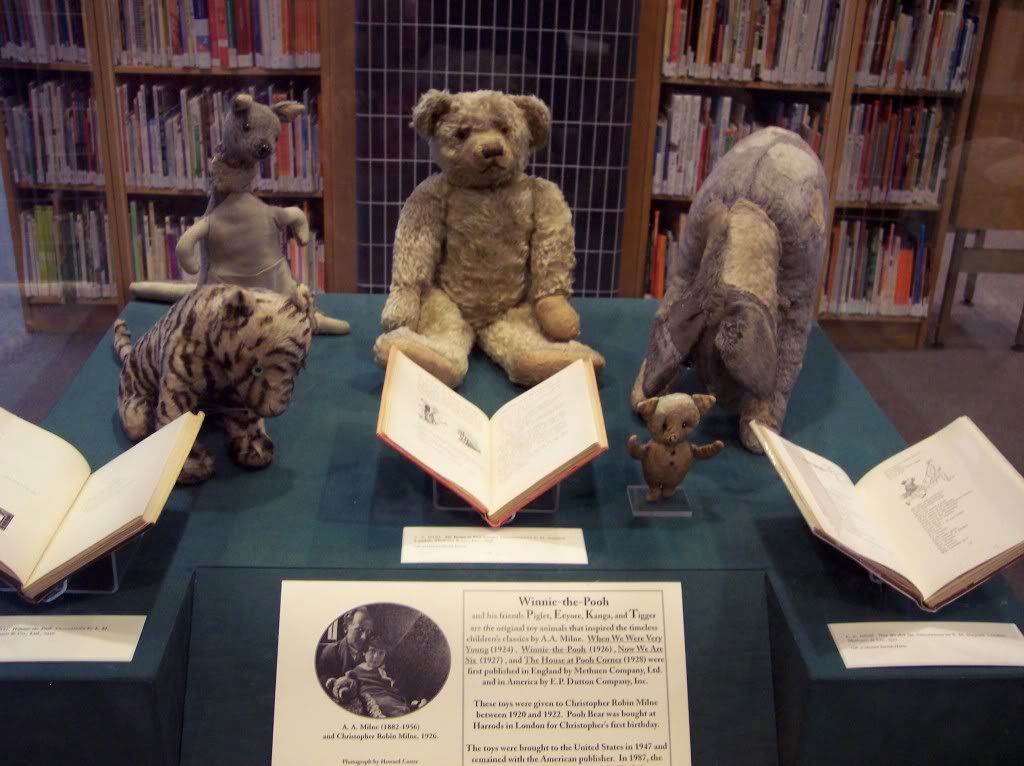The texts of both Dizzy and Ella Fitzgerald sing with a jazzy, hip cat, cool flavor that works effectively with the subject matter of the books.
NOTE: I have included links to some YouTube videos of Dizzy Gillespie and Ella Fitzgerald performing. I recommend letting children listen to/watch the videos so they will have a better understanding of the kind of music these two people are famous for.

DIZZY
Written by Jonah Winter
Illustrated by Sean Qualls
Arthur A. Levine/Scholastic, 2006
Winter begins the story of Dizzy’s life by explaining how he was born into a poor family, how other kids beat him up because he was so small, and how he learned to fight back. Dizzy’s father also beat him often. Dizzy tried to be tough. He was often angry. One day a music teacher gave him a trumpet. Dizzy played that horn like crazy—blowing out the anger he felt inside. His music wasn’t pretty at first—but playing the horn made him feel good.
Dizzy kept practicing until he was the best musician in his small southern town. He became bored with just playing music that was written on a page. He wanted to play jazz, to break the rules, to invent new rules with his music. He headed for Philadelphia.
Dizzy was quite a prankster. While on stage, he’d fall off his chair, play practical jokes on other musicians, push the piano player off the bench and then play the piano with his left hand while holding the trumpet in his right hand. The older musicians didn’t care for his antics. Dizzy didn’t care. He wanted to be noticed.
In time, Philly seemed like small time to Dizzy—so he took off for New York, a city that was alive with jazz all night long. He began playing trumpet with a big name band—and clowning around again. He KNEW he had to do something to make himself stand out—even though it cost him his job. But that was okay. Dizzy was a man with a mission. He wanted to change jazz into something new, something cooler—a crazy kind of jazz that’s called bebop!
“BEBOP.”
That’s what Dizzy called
this CRAZY kind of jazz
that he had invented just
by having the courage to be himself
until the very thing that had gotten him into trouble
so much—
being a clown, breaking the rules—
had become the thing that made him great,
his ticket
into Jazz Heaven
where, on certain nights,
Dizzy Gillespie
Still shoves the Angel Gabriel out of the way
And shows him how to play
Bebop
In an interview in School Library Journal, Jonah Winter states: “I have always been a fan of Beat Generation poetry. I know it has its limitations, and is easily parodied, but it's fun—and that style seemed perfect for getting across the Dizzy Gillespie story.” Winter is right—he sets the perfect tone with his “beat generation” text for his biography of a jazz giant. And with his illustrations, artist Sean Qualls captures the jazzy, beat essence of Winter’s text and Dizzy and his music. Qualls’ stylistic mixed media pictures, which were done in acrylic paint, collage, and pencil, evoke the intensity of the trumpeter wrapped up in making music with his horn.
I’ll quote what Jonah Winter said about Qualls’ art for Dizzy in his SLJ interview: “I had never worked with Sean before this, and I didn't see the illustrations until they were pretty much all done, but I will say—they are so surprising, subtle. The cool palette he uses provides such a nice counterpoint to the crrrrrrrrrazy text. It really gets across the tension between what Dizzy Gillespie and his cohorts were doing with their music (which was explosive and cool at the same time) and that oh-so-hip/cool exterior which totally changed the image of how jazz musicians were perceived.”
Dizzy is an outstanding biography that tells about the life and music of one mighty cool bebopper! It’s a picture book in which both the text and illustrations work in perfect harmony
Dizzy Gillespie-Bebop Reunion—Diz, Kai, Monk
Dizzy Gillespie & Louis Armstrong—Umbrella
Dizzy Gillespie on the Muppet Show
The Buzz About Dizzy: Jonah Winter, an interview with Jonah Winter about his book Dizzy from School Library Journal (9/20/2006)

ELLA FITZGERALD: THE TALE OF A VOCAL VIRTUOSA
Written by Andrea Davis Pinkney
Illustrated by Brian Pinkney
Jump at the Sun/Hyperion, 2002
The narrator of Ella Fitzerald is Scat Cat Monroe. In the book, Scat Cat is pictured as a cat dressed up in a suit. He tells us the story of Ella Fitzgerald’s life in four parts, which focus on some of the most important periods/events of her life.
Track 1: Hoofin’ in Harlem
Track 2: Jammin’ at Yale
Track 3: Stompin’ at the Savoy
Track 4: Carnegie Hall Scat
Track 1: When Ella was young, she dreamed of becoming a dancer. She even taught herself to tap-dance. But when she entered a talent contest at the Apollo Theater in 1934, she got cold feet. She just couldn’t dance—so she started singing.
At first, her voice came quiet as a whisper.
A measly little hiss, soft as a cricket. But when the
band joined in, Ella rolled out a tune sweet enough
to bake. She won the contest straight up, kicked her
dance dreams to the curb, and pinned all her hopes
on being a singer.
Track 2: In 1935, the Harlem Opera House signed Ella as a featured singer. A man named Bardou Ali, who was the master of ceremonies for the Chick Webb Orchestra, saw her perform one night. Bardou thought Ella would be perfect for the orchestra—but Chick was a hard man to please…a perfectionist. Chick said he’d let Ella try out when the orchestra played at a dance at Yale University. Well, Ella had those “Yalies jammin’.” Chick welcomed her into the band that very night.
Track 3: Ella sang with the Chick Webb Orchestra at the Savoy. “The place was crammed full of folks who’d come to shake their tails to the orchestra’s sound.” And what of Ella who had once dreamed of becoming a dancer? Why, after she finished singing, she’d get down off the stage and dance with the patrons!
Chick saw Ella’s talent and helped her learn how to deliver a song…how to grab hold of a melody and wrap her voice around it. The two of them had a real chemistry and made beautiful music together. In May of 1937, the Chick Webb Orchestra took on the Benny Goodman Orchestra in a battle of the bands. Ella was on fire:
Her voice was quick-fired rhythm, with a brassy
satin twist.
She sizzled with Chick’s cymbals.
Busted loose with his bongos.
She sang like tomorrow wasn’t ever gonna come.
Track 4: Ella’s star continued to rise. She helped lift the orchestra to new heights. With Al Feldman, one of the other members of the orchestra, she wrote and recorded a song entitled “A-Tisket, A-Tasket,” which was a smash hit. (You can hear Ella perform it in a YouTube video. Look for the link below.)
When bebop became the “hot” music, Ella got on board. Dizzy Gillespie asked her to join his band. She started scat singing—using nonsense syllables instead of lyrics to carry a rhythm. In September of 1947, she and Dizzy “headlined a sold-out performance at Carnegie Hall.”
In A Note from the Illustrator, Brian Pinkney explains how he was inspired by some Harlem Renaissance artists, including Aaron Douglas and William H. Johnson, who worked during the days when Ella “came of age in Harlem.” He says he was also inspired in his use of colors by those that were in style during the Art Deco movement (1925-1940).
Pinkney’s illustrations, which were done in scratchboard, dyes, and acrylic paints, get into the free-spirited rhythm of jazz. Some of his compositions even touch on the surreal: Chick Webb’s “swinging” band swings on swings in the sky, Ella and Chick fly over the city above the Savoy, and Ella and Dizzy soar above the moon on a giant trumpet. These musicians have gone beyond the bounds of traditional music…to where they are free to improvise and really take wing with their jazz and scat and bebop. As in Dizzy, the art and text in Ella Fitzgerald work together in perfect rhythm to tell the story of a “vocal virtuosa.”
Ella Fitzgerald: One note samba (scat singing) 1969
Summertime—Ella Fitzgerald & Louis Armstrong
Ella Fitzgerald—A-Tisket, A Tasket





Hi Elaine,
I'm so glad you like the book. It's funny that you paired it with Ella because I'm working on illustrations for a picture book bio about Ella Fitzgerald for Candlewick written by Roxane Orgill.
Somehow I missed Jonah's interview w/SLJ. Thanks for posting.
Sean
Sean,
After reviewing the books, I went looking for YouTube videos of Dizzy and Ella performing. It was great listening to their music. I was humming A-Tisket, A-Tasket most of the day. I'll be looking forward to that book about Ella. Can't wait to get a copy of BEFORE JOHN WAS A JAZZ GIANT!
Ella's voice is contagious. I forget what list the book is on but expect to see it sometime in '09.
I'm hoping to have a book party for JAZZ GIANT. A friend of a friend lives in the same building as John's son Ravi so I'm trying to work up the courage to ask him to play at the party.I'll let you know.
Sean,
I picked up another book you illustrated the other day, too--"How We Are Smart." I had never heard of the book before I explored your Web site a couple of weeks ago. I love your portraits of the people in the book. As a former teacher, I can certainly see how the book could be used in the classroom to show students how there are many different ways a person can be smart.
Elaine,
How We are Smart came out around the same time as Dizzy and Poet Slave so it may have got lost in the shuffle. When I do some of the local street fairs it seems like How We are Smart really appeals to a lot of teachers. I like the idea of multiple intelligence because standardized tests seem like such a limited way of measuring how smart someone is.
Anyway, I'm glad you like the book!
Sean